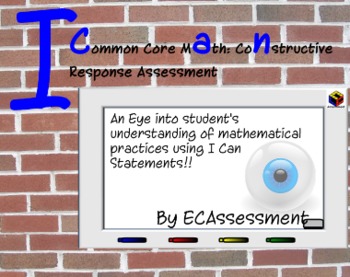Constructed Response Assessment & Grading Rubrics (SmartBoard)
- Zip
Description
This product consists of 2 Smart Board activities with Grading Rubrics. The activities contain 68 Common Core Math Tasks as well as 68 Grading Rubrics.
Description:
Product1: Smart Board Acitvity: CRA: Common Core Standards
*34 Common Core Tasks with standards
*34 Kid Friendly Rubrics aligned with Common Core Mathematical Practices (One rubric for each task)
Product 2: Smart Board Activity: CRA: I Can Statements with Grading Rubrics
*34 Common Core Math Tasks with
*34 I CAN Statements
*34 Kid Friendly Rubrics aligned with Common Core Mathematical Practices (One rubric for each task)
This Smart Board activity will give your students a chance to grade each other's work. Each student in my class was able to come to the Smart Board and complete a task aligned with Common Core 4th Grade Standards. (These standards were replaced with I Can Statements) While the student at the board was completing the task, each student had a grading rubric at their desk for that certain task. This activity will give your students the importance of showing their work with models and equations, not just the answer. Common Core focuses on "Understanding" the math concepts. Our students need practice explaining and using dialogue (Math Talk) to discover for themselves the best way to solve math problems.
Feedback is always appreciated and helps you earn TPT credits for future purchases!! Don't forget to click the green star at the top to follow me to get notifications of my newest products, sales, & newsletters!
Copyright ©ECAssessment, LLC.
All rights reserved by author.
Permission to copy for single classroom use only.
Electronic distribution limited to single classroom use only.
Not for public display.





